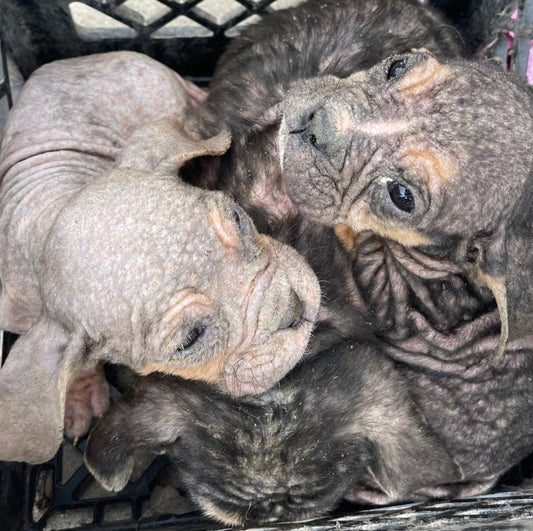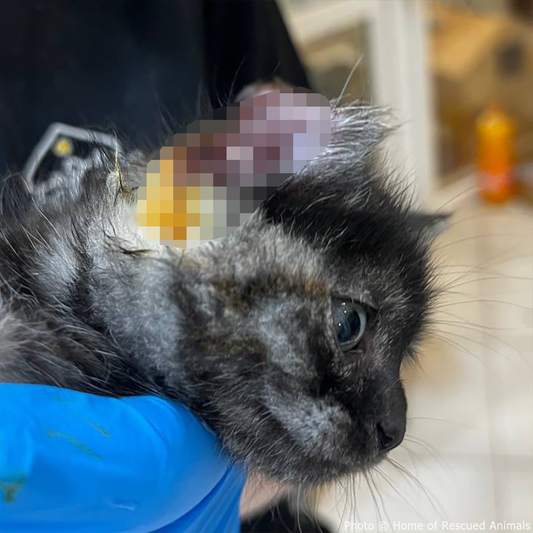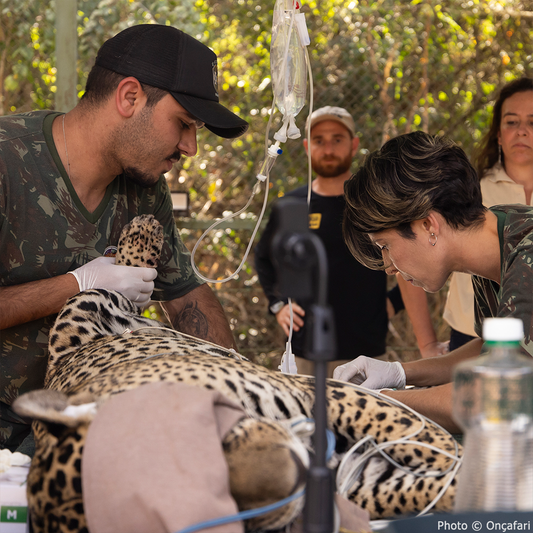Scientific Survey Reveals Promising Conservation Efforts for the World's Most Endangered Marine Mammal
Matthew Russell
The vaquita, a small porpoise and the world's most endangered marine mammal, is teetering on the edge of existence. However, the latest scientific survey of the species reveals that new conservation efforts are showing promise, providing a glimmer of hope for their survival.
María Luisa Albores González, Mexico's secretary of environment and natural resources, shared the survey results at a news conference, conveying a sense of optimism.
“Today, we have good news, hopeful news,” González said.
 Photo: Wikimedia Commons / Paula Olson, NOAA, License: Public Domain
Photo: Wikimedia Commons / Paula Olson, NOAA, License: Public DomainThe Vaquita is a critically endangered porpoise.
The Gulf of California, the waters separating Baja California from the Mexican mainland, is the only place where vaquitas are found. Unfortunately, they have been pushed to the brink of extinction due to their entanglement in gill nets, Porpoise.org reports. These large mesh curtains, used for fishing, catch fish by their gills but also trap dolphins, sea turtles, and vaquitas, preventing them from surfacing to breathe and resulting in their death.
The international team of scientists estimated that a minimum of 10 vaquitas still remain in the Gulf of California. The survey employed visual identification and acoustic monitoring techniques over a span of 17 days in May. Among the footage captured was a heartwarming sight of a calf swimming alongside its mother, revealed by the appearance of a little dorsal fin next to a larger one.
https://youtu.be/GL32vpqJhtc
"We estimated that the sightings included 1-2 calves and there was a 76 percent probability that the total number seen, including calves, was between 10 and 13 individuals," said a report issued by the NGO Sea Shepherd spearheading vaquita conservation efforts.
The estimated number of vaquitas in this recent survey aligns with the studies conducted in 2021. However, an earlier survey also uncovered a disheartening sight: over 100 fishing boats operating in a highly protected zone known as the zero-tolerance area. At the time, the Mexican Navy also acknowledged its insufficient enforcement measures, the Associated Press reports.
 Photo: Wikimedia Commons / Paula Olson, NOAA, License: Public Domain
Photo: Wikimedia Commons / Paula Olson, NOAA, License: Public DomainMany vaquitas drown in gillnets meant for totoaba.
Since then, the Mexican Navy has forged a closer partnership with the Sea Shepherd Conservation Society, a nonprofit organization that patrols the region to identify and remove gill nets, the New York Times reports. Moreover, last year, the navy took a significant step by deploying a system of anchored hooks designed to entangle gill nets within the zero-tolerance area and reduce their threats to marine species. Gillnetting in the area has since decreased by over 90%, as highlighted in the new survey.
“It’s the biggest conservation success for vaquita that I’ve seen in 30 years,” Barbara Taylor, a biologist and vaquita expert who led the survey and who recently retired from National Oceanic and Atmospheric Administration Fisheries, told the New York Times.
Despite these positive developments, the vaquita is still not in the clear. No gillnetting was observed within the zero-tolerance area during the survey, but it was reported northwest of the area, where vaquitas were also spotted and gillnetting is still officially banned.
The report suggests an expansion of the use of concrete blocks as a straightforward and effective measure. It calls upon the Mexican government to take advantage of this opportunity, emphasizing the immediate impact it can have before the next fishing season.
 Photo: Wikimedia Commons / Paula Olson, NOAA, License: Public Domain
Photo: Wikimedia Commons / Paula Olson, NOAA, License: Public DomainThere may be as few as 10 vaquitas left.
Transitioning local economies, heavily reliant on gill nets, to alternative fishing gear poses a more complex challenge, the World Wildlife Fund reports. Gill nets are also used to catch legal species such as shrimp, corvina, and mackerel, as well as protected species such as the endangered totoaba, which attracts illegal trafficking and organized crime due to the high demand for its swim bladder in Asia.
Mexico faces increasing international pressure to enforce gill net fishing bans in protected vaquita habitats, reports the Center for Biological Diversity. Failure to do so could result in current or potential trade sanctions under two United States laws, a global wildlife trade treaty, and the United States-Mexico-Canada Agreement.
Captivity is not a viable option for preserving the species, as previous attempts led to stress-induced fatalities, Mongabay reports. However, the vaquita's improved status presents Mexico with another opportunity to take the necessary steps for its preservation.
 Photo: Wikimedia Commons / Rivera0997, License: CC BY-SA 4.0 DEED
Photo: Wikimedia Commons / Rivera0997, License: CC BY-SA 4.0 DEEDThe vaquita species is on the brink of extinction.
The vaquita's story is one of fragile hope in the face of immense challenges. While the road ahead remains challenging, the dedication of scientists, conservation organizations, and local communities offers a chance for the vaquita to defy expectations and survive.
Click below and help save this species from extinction!
Matthew Russell is a West Michigan native and with a background in journalism, data analysis, cartography and design thinking. He likes to learn new things and solve old problems whenever possible, and enjoys bicycling, spending time with his daughters, and coffee.




















